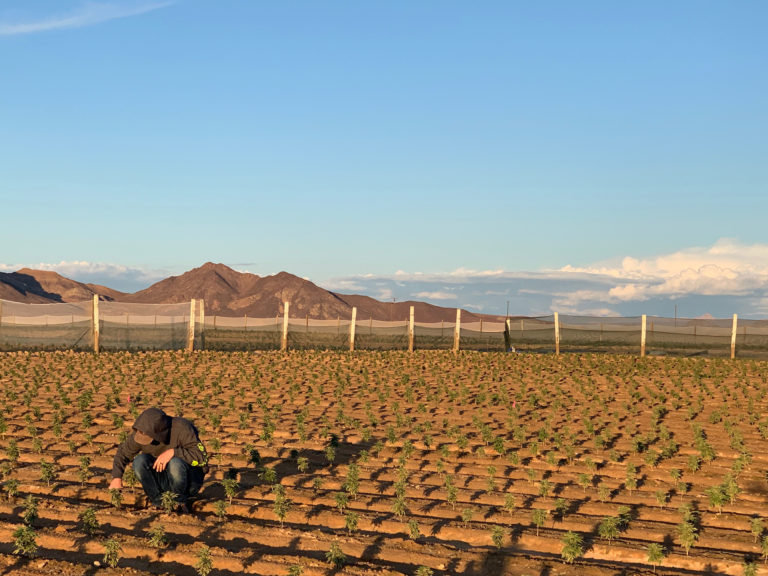
And 18 months ago, it found that location: in the middle of the Mojave Desert, miles from civilization. The land is owned by downtown-based water infrastructure developer Cadiz Inc. and sits atop an aquifer.
Glass House and Cadiz formed a joint venture in late 2019 to grow hemp on the property, with an eye toward turning the hemp into an array of usable products, from cannabidiol, or CBD, oils to chewable gummies. They were taking advantage of a new law enacted by Congress as part of the 2018 farm bill that legalized hemp production nationwide.
“Among the benefits of growing cannabis in the desert aquifer was the distance from residents and the relative lack of crop pests,” said Graham Farrar, president of Glass House Group and chief executive of the joint venture, known as SoCal Hemp. “There aren’t many places in California where you have those conditions.”
For Cadiz, the venture was a chance to monetize its landholdings as the company’s 25-year quest to pump water from the aquifer and transport it via pipeline to water agencies throughout California had encountered a new round of delays. The state legislature, responding to pressure from environmental groups, had passed a law requiring another layer of environmental review.
The first test for the joint venture was to see if hemp could be grown in the harsh desert environment. In early spring 2020, SoCal Hemp planted a test crop on 200 acres of the Cadiz property, using water pumped up from the aquifer and pushed through a newly installed drip irrigation system.
But as the growing season for the test crop went on, wind emerged as a problem.
“We had to install windbreaks, which was something we were not used to doing with our other cultivation sites,” Farrar said.
The harvest of the first test crop proved a success, yielding hundreds of thousands of pounds of dried hemp. The hemp was then shipped off to a third-party processing plant in Klamath Falls, Ore., where it has been turned into CBD oil and other products Glass House Group can sell in its four retail outlets in the state and distribute to other retailers.
“We proved you can grow hemp in the desert at scale,” Farrar said.
But for SoCal Hemp, that may be the easy part. Its toughest challenge may lie ahead as it tries to find markets for its hemp-derived products.
That’s because there is now a hemp glut.
“We saw an influx of businesses starting ventures during the boom of hemp activity in 2019,” said Michelle Mabugat, a cannabis industry legal consultant who is now of counsel with the Century City office of Greenberg Glusker Fields Claman & Machtinger. “ln 2019, farmers overproduced hemp in anticipation of high demand for CBD; in retrospect, that demand was overhyped.”
The result, she said, is that a consolidation is now under way among hemp producers.
The SoCal Hemp venture may be helped by a recent development involving Glass House Group. On April 8, the company announced it was being acquired as part of a $567 million deal by Toronto-based Mercer Park Brand Acquisition Corp., a special purpose acquisition company founded in 2019 to establish a major marijuana brand. Mercer Park plans to take its acquisition public on the Toronto Stock Exchange.
“We will be better funded to go bigger and at bigger scale than before,” Farrar said of the deal.
Mabugat said this additional capital base may give SoCal Hemp more ability to withstand the current contraction in the hemp production market.
“An operation the size of SoCal Hemp would presumably permit it to take more risk and weather the downturn in the market,” she said.
